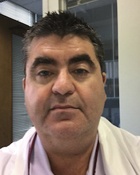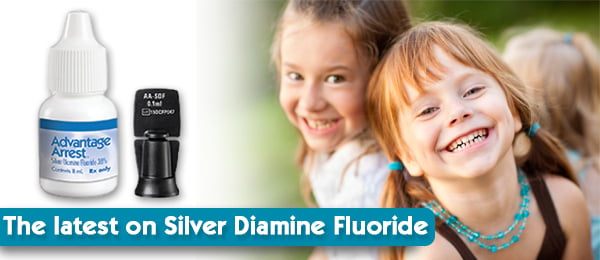Thicker mouthguards (MGs) increase the capacity to relieve trauma-related stress, while custom-made MGs are mechanically superior to and perform better than stock MGs. The findings are from a study published in the December issue of Dental Traumatology.
Authors designed the study to measure how the type and thickness of MG affected the stress distribution on hard facial tissues. They used software to model a 3-dimensional skull and human jaw and then shaped and inserted all teeth into the alveoli. Authors created 6 models and divided them into 2 MG types (stock and custom made) of 3 thicknesses each: 1 millimeter, 2 mm, and 4 mm. Authors evaluated 2 additional models without MG with and without teeth contact. MG coverage was limited to the crown and tooth region.
Authors used a bounded contact interface between all contacts to simulate a situation in which an athlete would not lose his or her MG on impact. They performed a static impact analysis in 10 distinct stages, starting with the initial moment with force (F) equaling 0 newtons (N) and ending with the moment with F equaling 500 N. The impact lasted 1 second and was simulated with a 6.5 mm-diameter steel ball in the maxillary right canine to simulate the reaction between the sides of the skull with and without impact. Authors performed loading for models without MG on the outermost MG surface.
System constriction took place in the foramen magnum region. Constriction allowed the skull base to move to the sides and back during the test. Authors measured shock absorption capacity as the stress percentage peak in the models with MGs compared with the models without buccal protection. They established Von-Mises stresses—the integration of all stress components into an equivalent value—to indicate the generated stress energy during impact. Authors compiled results to dental structures for compression and tensile stresses.
Authors found the greatest concentration of stress occurred in the dental structures of all analyzed groups, which showed it was easier for trauma to affect teeth than to fracture one of the facial bones. The results also showed a higher concentration for the group without MG and with an absence of occlusal contact. Stress generated in the teeth showed that tensile regions would affect the alveolar bone, nasal cavity, and orbital floor. The group using a custom-made MG of 4 mm was the least damaged. Energy dissipation in the alveolar bone was proportional to the stress generated in the dental structure.
“[T]he group without MG and occlusal contact presented worse mechanical behavior with almost exclusive participation of the upper arch in the energy dissipation generated by the impact,” the authors noted. “It can be suggested that the antagonistic dentition effect on the biomechanics of MGs is beneficial through dissipating the generated stresses.” Read the original article here or contact the ADA Library and Archives for assistance.

The building blocks of precision oral health in early childhood
Precision dentistry that is predictive, preventive, personalized, and participatory offers an ideal environment for treating early childhood caries (ECC). Well-developed communities offer the best environment for precision dentistry to treat ECC, and biological research can help explain how geography and social status affect ECC. The findings are from zero out early (ZOE) 2.0, a large-scale, community-based, genetic epidemiologic study of early childhood oral health of about 7,000 preschool-aged children enrolled in Head Start centers in North Carolina. The results of the latest phase of the study were published online December 19 in Journal of Public Health Dentistry.
Authors designed the current phase of the study to conduct a trans-ethnic genomewide association study of ECC. They based sampling across all Head Start programs in North Carolina on a probability-proportional-to-size scheme. Clinical measures collected for the study included surface-level dental caries, tooth-level developmental defects of enamel, occlusal characteristics, dental trauma, behavior/cooperation during the examination, and obesity. Researchers also compiled caregiver data on perceived oral health status, oral hygiene, diet, dental visit frequency, medications, and family education level. About 4,600 people completed the study’s clinical examination and biological specimen collection protocol.
Authors used the International Caries Detection and Assessment System criteria of ≥ 3 (localized enamel breakdown) to define the presence of ECC. The authors found that more than one-half of participants had ECC. They also found that roughly 20% were obese, and that parental education level was a “strong collate” of childhood obesity.
Based on their findings, the authors proposed 6 building blocks to establish precision dentistry to treat ECC:- Define and measure phenotype.
- Determine influence of salivary properties and supragingival microbiome and community and environment.
- Leverage big data.
- Develop and use health and disease biomarkers.
- Train precision health-minded dentists.
- Advocate for investments in science, technology, education, and policy change.
The authors noted that the study’s primary and secondary outcomes would be reported in 2019 and 2020. Also in 2020, the authors plan to conduct genomic analyses based on the compilation of whole-genome sequence data on 10% of the study group, representing the most severe ECC cases.
The authors noted the considerable investment of time needed to account for the real-life conditions, challenges, and needs of preschools for a study like this, but added that the investment was well worth it.
“Building lasting relationships and listening closely have helped inform our research agenda and likely increase our team’s ability to give back in a meaningful way to participants, their families, and their educators,” they wrote. “Our community partners have expressed their appreciation for the facts that the team visits the children ‘in their own environment,’ creates a ‘safe and comfortable’ environment, works ‘with their schedule,’ families received ‘incentives and dental supplies,’ and had staff members that ‘spoke to children in their language.’ ”
Read the original article here or contact the ADA Library and Archives for assistance.

Tobacco smoke at home poses higher risk of developing severe early childhood caries
Children who live with family members who smoke are at much higher risk of developing severe early childhood caries (S-ECC), according to a study published online October 2, 2018 in Caries Research. The study also found a significant association between S-ECC and irregular snack times, less frequent brushing, drinking or eating sweets after dinner, and low household income.
Authors designed the cross-sectional study to measure risk factors, including environmental tobacco smoke (ETS) from family members, for S-ECC in 3-year-old Japanese children. The study population came from the city of an area with a high rate of early childhood caries (ECC).
Authors examined 2,277 children (1,171 boys and 1,106 girls) for decayed, missing, or filled teeth (dmft) for the study. Parents or guardians completed a questionnaire that provided data on sex, the absence or presence of a smoker at home, the number of smokers at home, snack times, drinking or eating sweets after dinner, toothbrushing frequency, fluoride toothpaste use, and socioeconomic status. Authors used American Academy of Pediatric Dentistry guidelines to classify children with ECC and S-ECC. They used logistic regression analysis to estimate odds ratios of risk factors for ECC and S-ECC.
The dmft index (standard deviation) for children was 0.77 (2.06). The prevalence of dental caries was 20.6% (n = 468). The prevalence of S-ECC was 7.9% (n = 180). A total of 60.2% (n = 1,370) children had at least 1 smoker in the home, while 10% (n=227) of children were from a family with low household income.
Authors found that drinking or eating sweets after dinner, irregular snack times, caregivers who brush their child’s teeth less often, presence of smokers in the home, number of smokers in the family, and low household income were significantly associated with higher odds of S-ECC. Authors also found that not using fluoride toothpaste, drinking or eating sweets after dinner, irregular snack times, caregivers who brush their child’s teeth less often, presence of smokers in the home, number of smokers in the family, and low household income were significantly associated with higher odds of ECC.
Regression analysis showed a significant association between ETS from family members and ECC or S-ECC, even after controlling for oral hygiene, snacking habits, and socioeconomic status.
“Preventive behaviors may cause economic burden to a family living with no residence tax [low household income] in this study,” the authors wrote. “Prevention of S-ECC is not only the responsibility of the household but also that of society as a whole.”
Read the original article here or contact the ADA Library and Archives for assistance.

Careful, compassionate healthy weight counseling for children
Caregivers of children with obesity are generally open to healthy weight counseling (HWC) in the dental setting, but their response depends on the doctor-patient relationship and word choices related to HWC. Caregivers preferred an approach that was compassionate, linked to oral health, and tailored to meet the needs of each family. The findings are from a study published in the November/December issue of Journal of Clinical Pediatric Dentistry.
Authors designed the study to identify best strategies for the dental team to offer HWC. They completed interviews with 50 randomly chosen caregivers whose children aged 4 through 12 years and were patients of the Children’s Clinic at the School of Dentistry at the University of North Carolina at Chapel Hill, North Carolina. They developed a structured interview guide that offered 7 HWC approaches, each with embedded words that expressed the same message in different ways.
Authors used the χ2 test to measure the relationship among variations in word choice and caregiver preference for the HWC approaches. They established a Cramer V value (0-1) to measure the strength of the association among variations in word choice and caregiver preference for HWC. They performed Student t tests to compare the mean ages of children whose caregivers showed a preference for or against their children being present for HWC.
A total of 94% of study participants were receptive to discussing their children’s weight in the dental setting, while 6% said their preferred such a conversation to take place with the children’s pediatricians. Of those receptive to HWC, 56% said they preferred the dentist to deliver the message, while 45% said they would discuss it with any dental team member.
The authors found that HWC approaches with word choices that expressed empathy and compassion were better received than those that did not. One popular approach relayed that the child’s weight “caught the attention of the dental team,” while less popular approaches used words like “fat,” “chubby,” and called the child’s weight issue “disturbing”, “alarming,” and “needing immediate attention.”
Caregivers expressed mixed opinions on whether they preferred their children to be present during the HWC discussion; 60% preferred their children not to be present, while 34% preferred the children’s presence and 6% expressed no preference. Most caregivers who perceived their children as overweight or obese (66.7%) preferred their children’s presence during HWC.
Caregivers expressed appreciation for the dental teams’ desire to be involved in offering HWC but said the conversation should take place only after rapport with the family is established. Caregivers also said HWC would be better received if the discussion included caries-related nutritional counseling. Some said that pairing discussion of a healthy diet with preventive dentistry instructions would broaden understanding of the dental team’s role in dietary discussions.
“These findings offer more encouragement for the dental team to participate in the interdisciplinary approach to address child¬hood obesity,” the authors wrote. “Weight-related counseling is an easy next-step and our findings reveal that most caregivers support the role of the dental team in intervening with their children’s weight as long as a caring approach is taken and the end goal is to benefit the health of the child patient.”
Read the original article here or contact the ADA Library and Archives for assistance.
Advantage Arrest is the first silver diamine fluoride available in USA
Advantage Arrest is the first and only American-made SDF, a must-have for dental offices. Advantage Arrest’s tinted SDF formula enhances placement visualization and is available in an economical 8 mL bottle or unit-dose packaging for enhanced asepsis. Advantage Arrest discloses carious lesions (D1354) and is a proven preventive agent (D1208). Elevate Oral Care Preventive Care Consultants have conducted educational meetings for thousands of oral health professionals since launching Advantage Arrest in 2015, including the new Nonrestorative Treatment of Carious Lesion Guidelines from the American Dental Association. To learn more, to schedule an informative staff meeting or to order click here.
Register for AAPD 2019
May 23-26  Attendees will enjoy premiere continuing education, over 250 exhibitors, relevant updates on technology and clinical topics, content presented by the best in the world of pediatric dentistry, opportunities to network with colleagues and friends, and the Sweet Home Chicago Welcome Reception—an event that is not to be missed! Register now at annual.aapd.org.
Attendees will enjoy premiere continuing education, over 250 exhibitors, relevant updates on technology and clinical topics, content presented by the best in the world of pediatric dentistry, opportunities to network with colleagues and friends, and the Sweet Home Chicago Welcome Reception—an event that is not to be missed! Register now at annual.aapd.org.
Watch for new AAPD website The American Academy of Pediatric Dentistry—The BIG AUTHORITY on little teeth—is launching a new website. Keep an eye out for this new, dynamic resource.
The American Academy of Pediatric Dentistry—The BIG AUTHORITY on little teeth—is launching a new website. Keep an eye out for this new, dynamic resource.
2019 ADA Children’s Airway Conference
March 3-4, 2019
ADA Headquarters — Chicago, IL  There’s still time to register for the second ADA Children’s Airway Conference: Optimizing Pediatric Airway Health: The Critical Role of Dentists. This conference offers 10.5 hours of continuing education credit and will guide the general, pediatric and orthodontic practitioner in the significance of sleep-related breathing disorders in children and how the ADA policy statement on the Role of Dentistry in the Treatment of Sleep Related Breathing Disorders directs them to address the issue. Click here for more information and to register.
There’s still time to register for the second ADA Children’s Airway Conference: Optimizing Pediatric Airway Health: The Critical Role of Dentists. This conference offers 10.5 hours of continuing education credit and will guide the general, pediatric and orthodontic practitioner in the significance of sleep-related breathing disorders in children and how the ADA policy statement on the Role of Dentistry in the Treatment of Sleep Related Breathing Disorders directs them to address the issue. Click here for more information and to register.

The consulting editor for JADA+ Specialty Scan — Pediatric Dentistry is James R. Boynton, DDS, MS, Clinical Associate Professor, Pediatric Dentistry Division Head, University of Michigan School of Dentistry. |

The consulting editor for JADA+ Specialty Scan — Pediatric Dentistry is Douglas B. Keck, DMD, MSHEd, Associate Program Director, Advanced Education in Pediatric Dentistry, Providence, Rhode Island NYU Langone Dental Medicine. |
|




